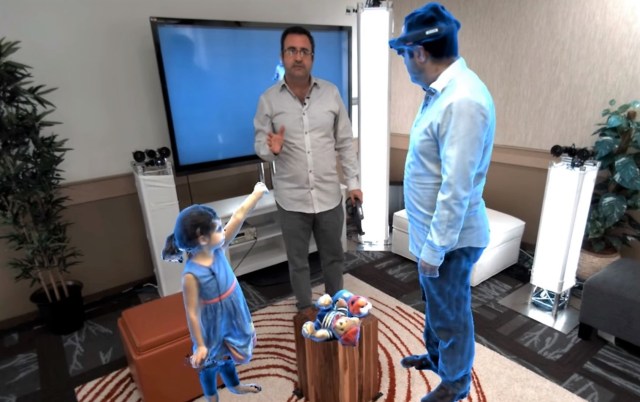
Just days after retiring from NASA, astronaut Scott Kelly gave HoloLens mixed-reality technology a boost today at the Microsoft Envision conference in New Orleans – and promised to get the International Space Station upgraded to Windows 10.
It’s been a busy time for Kelly: Last month, he finished up a nearly yearlong stint on the station, which was aimed at learning what will be required for long-duration missions to Mars and other deep-space destinations. Soon afterward, he announced he was retiring from NASA on April 1.
Today, Microsoft CEO Satya Nadella brought Kelly on stage to help inspire hundreds of developers attending this week’s Envision conference. “It’s the stories like Captain Kelly and NASA that inspire us in everything we do at Microsoft,” Nadella said. “Our mission is to empower every person and organization on the planet to achieve more.”
Kelly recalled that when he went over from the U.S. Navy to join NASA’s astronaut corps in 1996, the space shuttle program relied on the 486 computer processing chip and on-paper checklists. “The Internet was something new that I didn’t have a whole lot of experience with,” he said.
“Fast forward 20 years … and the space station is basically operated with a bunch of laptop computers using different types of software. Some of them use Microsoft Windows 7, actually. We’re a little behind there,” Kelly said.
“We’ve got to get the Windows 10 upgrade going into space,” Nadella joked.
“I’m going to call NASA right when we get out of here,” Kelly replied.





